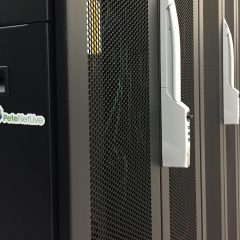Changing a Username and Email Address
(Windows & Exchange) KB ID 0000698 Problem This was asked on Experts Exchange this morning, and so I thought I’d get it documented. There are loads of reasons why you might want to change a username, display name, and email address. It can be spelt wrong, a user has got married/divorced and changed their surname, or they have simply changed their name. There are also some clients who don’t create a new user when a...
How to Join a Windows Domain
KB ID 000085 Problem For Windows 11 See: How to Join Windows 11 to a Domain This process was done with Windows 10, but the procedure is the same going all the way back to Windows 2000. Solution Note: The main reason this procedure fails, is because the client that you are attempting to perform the join from cannot resolve the domain name of your domain! Make sure it has one of your domain servers listed in the properties of its...
Terminal Server / Remote Desktop Services Server – Printer Not Working (Adding Print Drivers)
KB ID 0000850 Problem Windows Server 2008 R2 and 2012 are a lot better with printing support over remote desktop, that their predecessors were. But to be able to print to your remote users ‘local’ machines. The TS/RDP server still likes to have the correct drivers installed. What about Easy Print? Easy Print (Introduced with Server 2008 R2) is a ‘proxy’ service that simply sends all print processes to the...
Allow a Server to “Relay” Through Microsoft Exchange
KB ID 0000542 Problem Back in the early days of email, just about all mail servers let you relay mail though them. That was fine until someone worked out you could then get someone else to send out your “spam”, and they would look like the guilty party. Even today people misconfigure their Exchange servers and make them an open relay. But what happens if you have a particular server or machine that you want to let use your...
Exchange – New User(s) Not Showing Up On Global Address List
KB ID 0000775 Problem If you create a new user, give them a mailbox, and they seemingly fail to appear then don’t panic! Firstly and fore mostly: If you do anything in Exchange: Apply the “cup of coffee rule”, never make a change then go and prove that change works straight away! check it later. However most of us work in the real world and you have a user who needs to use this mailbox yesterday! Bear in mind, the process...




